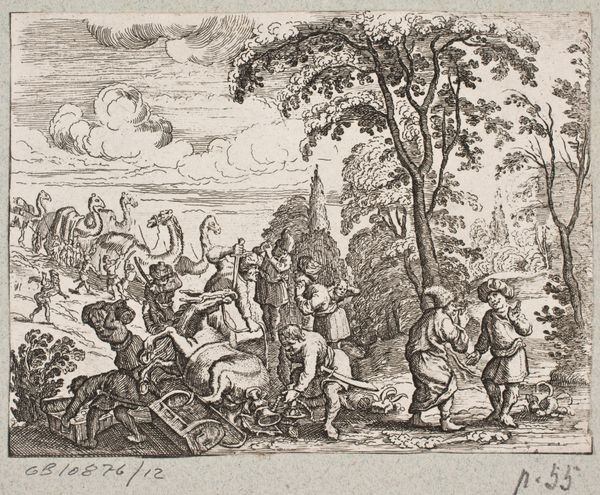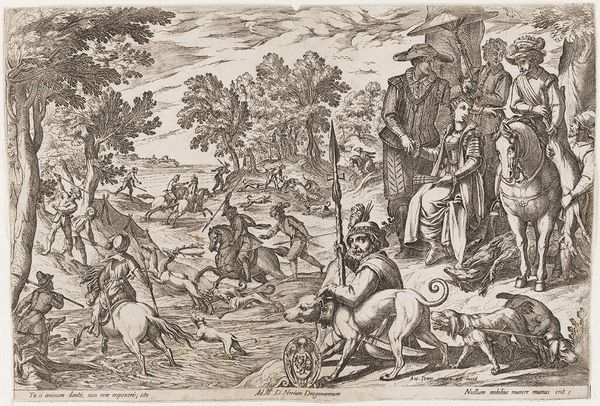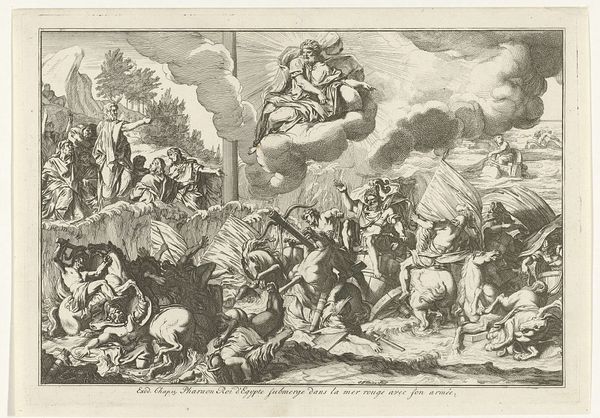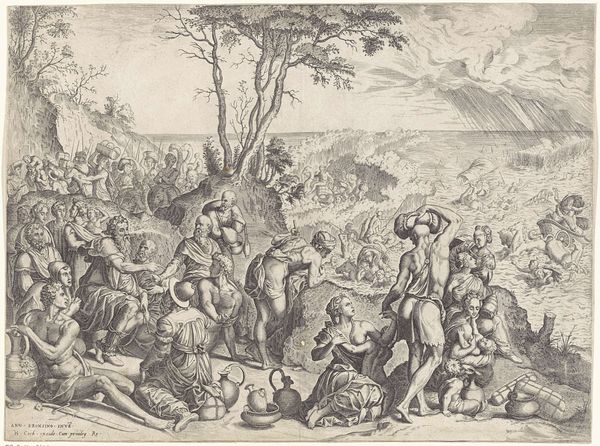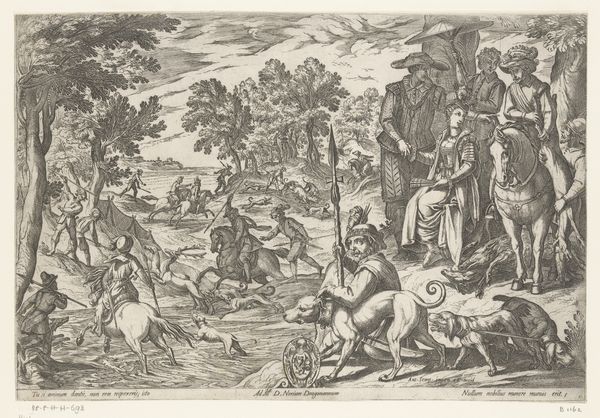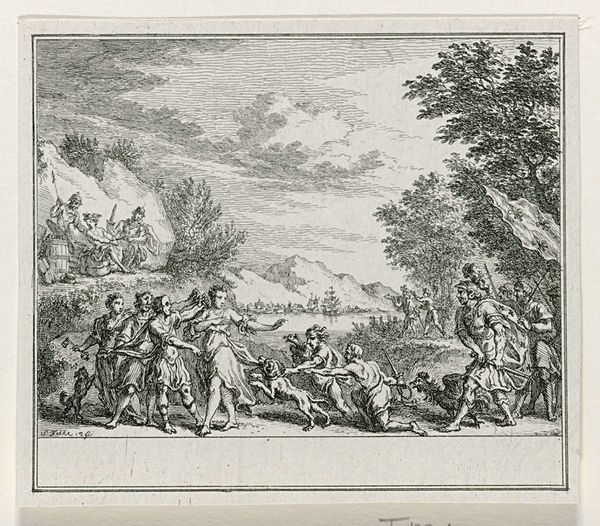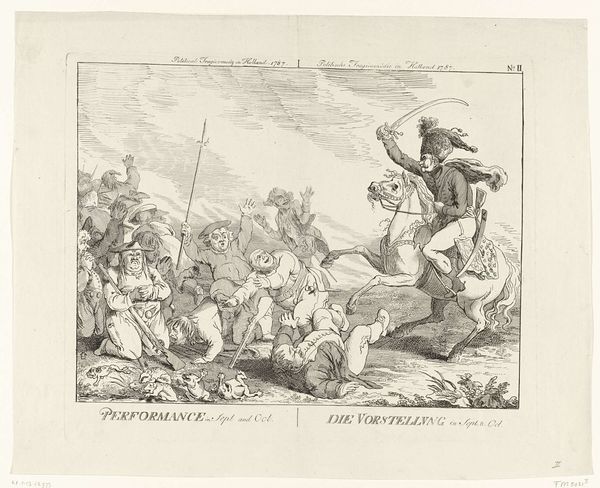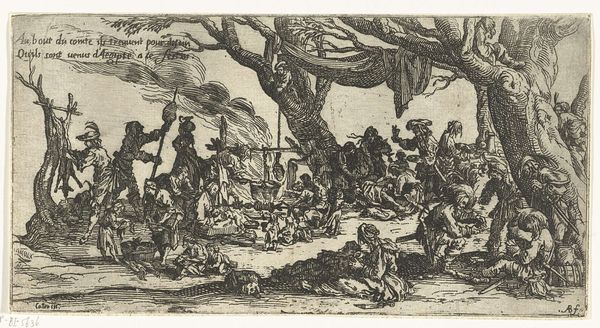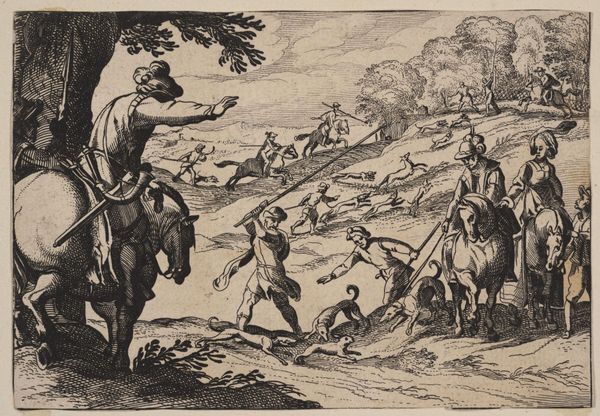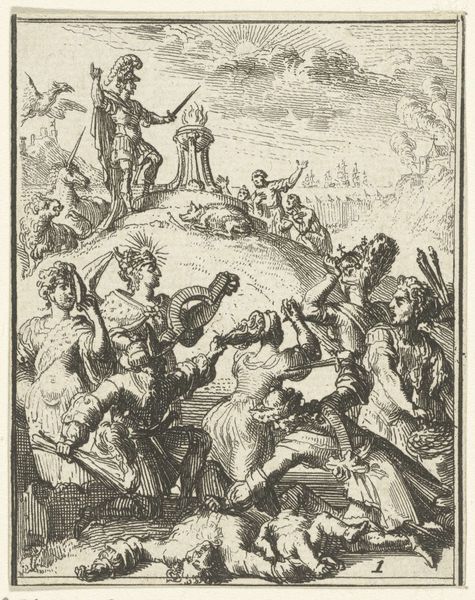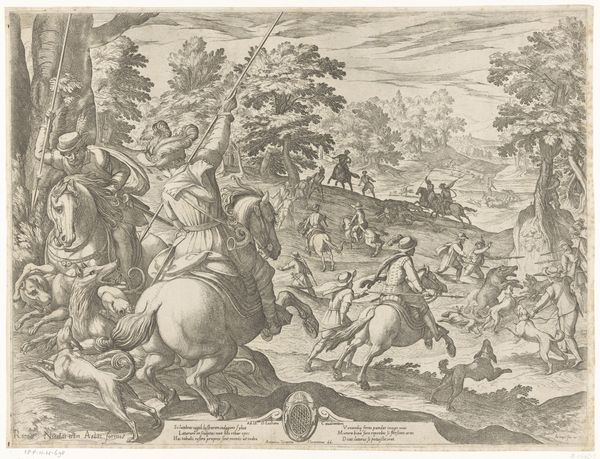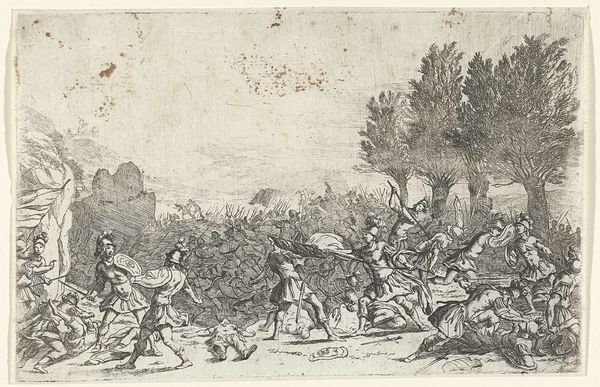
Ontwerptekening voor de prent Hebzucht probeert Fortuna in te halen, 1720 1720
0:00
0:00
anonymous
Rijksmuseum
drawing, paper, ink, pen
#
drawing
#
ink drawing
#
allegory
#
narrative-art
#
baroque
#
pen drawing
#
figuration
#
paper
#
ink
#
pen
#
genre-painting
Dimensions: height 274 mm, width 382 mm
Copyright: Rijks Museum: Open Domain
Curator: Welcome. Let's examine this 1720 ink and pen drawing currently residing at the Rijksmuseum. Its title, "Ontwerptekening voor de prent Hebzucht probeert Fortuna in te halen," translates to "Design Drawing for the print Avarice Tries to Catch Up with Fortune". What are your initial impressions? Editor: Well, it immediately strikes me as a panorama of societal woes, almost Breughelian in its crowded composition. Avarice isn't just chasing Fortune here; it seems like an entire system is desperately vying for a slice of the pie. The energy feels frantic, almost desperate. Curator: I agree, the composition is certainly dynamic. Note how the artist employs a clear foreground filled with detailed figuration that gradually recedes into a lighter, less defined background landscape. This perspectival approach enhances the depth of the scene and draws the eye through its many narrative elements. The monochrome tonality also contributes to a certain symbolic austerity, wouldn’t you say? Editor: Yes, I think the monochromatic palette adds to the overall sense of critique. Without the distraction of colour, the behaviours become foregrounded. I see not just greed, but vanity in the figure with the mirror, and foolishness with the fisherman, revealing the personal failings and structural problems which existed. I’m interested in how class dynamics manifest, who benefits and who suffers within this supposed chase. Curator: A point well taken. Considering its Baroque style, observe the emphasis on ornate detail, even within a simple line drawing. The intricate drapery, the expressive faces, and the carefully rendered landscape elements all work to create a cohesive visual experience, an attempt to visualize complex moral concepts such as ‘avarice’ and ‘fortune’. Editor: Exactly. It's fascinating how allegory functions here. But rather than solely focusing on ‘fortune’ as abstract luck, I suggest that this allegory directly engages with real anxieties around social and economic mobility of the period. Who defines Fortune, and what ideological narratives do they uphold to justify structural inequality? Curator: That interpretation highlights a dialogue between art history and contemporary discourse. But by analysing how the artist deploys line, form, and perspective to represent movement and depth, we can also address more perennial philosophical debates regarding human ambition. Editor: Indeed. This artwork becomes a potent lens through which to examine broader systemic questions surrounding morality and the social structures that both create and condemn "avarice". Thanks, these formal features certainly opened a path for sociohistorical explorations. Curator: Likewise, your observations reminded me that it's through understanding the intersection of form and sociohistorical context that this drawing attains its true depth.
Comments
No comments
Be the first to comment and join the conversation on the ultimate creative platform.
